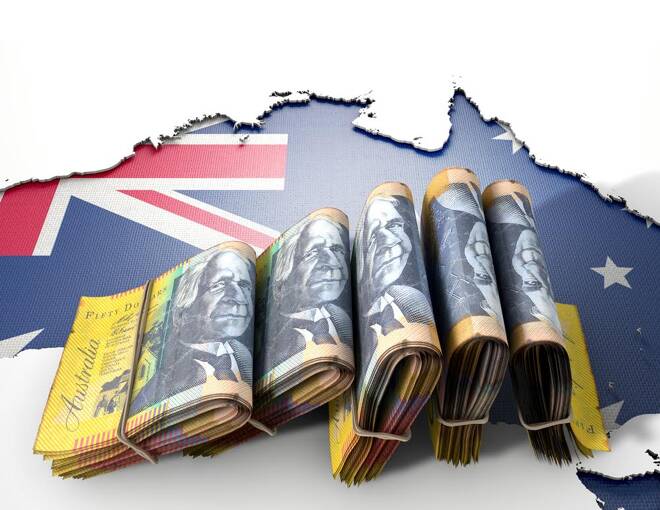Advertisement
Advertisement
AUD/USD and NZD/USD Fundamental Weekly Forecast – Dovish Central Bank Expectations Generating the Pressure
By:
New fiscal stimulus from the U.S. will be the wildcard this week. Passing this legislation would likely fuel a break in the U.S. Dollar.
The Australian and New Zealand Dollar finished lower last week with traders clearly laying out the near-term game plan. Pressuring the currencies over the near-term will be talk of additional stimulus measures from their respective central banks, while underpinning the Aussie and Kiwi will be the return of robust demand for riskier assets.
Last week, the AUD/USD settled at .7031, down 0.0259 or -3.55% and the NZD/USD closed at .6547, down 0.0212 or -3.13%.
The Aussie finished its worst weekly performance since mid-March on Friday as investors bet on further monetary policy easing in the economy, while its New Zealand counterpart posted a similar performance.
One catalyst shared by the two currencies was fear of a coronavirus-driven world recession which is also wreaking havoc across a number of global financial markets.
Another catalyst behind the selling pressure driving the price action in the Australian Dollar is predictions of a cash rate cut by the Reserve Bank of Australia (RBA) at its next monetary policy meeting on October 6. As of Friday’s close, some economists were predicting a cash rate cut to 10 basis points from the current 0.25 percent benchmark.
Shortly after the policy announcements, investors will also get the opportunity to react to the latest annual budget from the federal government where it is seen likely to keep the fiscal tap open for years to come.
Dovish central bank action was also the theme driving the Kiwi lower last week. Early in the week, the Reserve Bank of New Zealand (RBNZ) hinted at further monetary easing while warning the economy may need support for a long time as the world grapples with the COVID-19 pandemic.
Finally, a stronger U.S. Dollar also contributed to the weakness in the Aussie and Kiwi. The greenback’s strength was driven by weaker risk appetite lead by dour global economic data, fresh coronavirus restrictions in Europe and fading hopes of U.S. fiscal stimulus.
Weekly Forecast
This week, we would not be surprised by a choppy, two-sided trade in both the AUD/USD and NZD/USD. However, we are pretty confident that this price action won’t lead to a change in trend to up. At best, the currencies will consolidate. At worst, the downtrend will continue. The daily charts indicate there is plenty of room to the downside so you can add “acceleration to the downside” to the list of worst case scenarios.
Last week, RBA Deputy Governor Guy Debelle said Australia’s central bank is assessing various monetary policy options including currency market intervention and negative rates to meet its inflation and employment goals. As we move closer to the October 6 central bank policy meetings, we can expect more volatility as traders start to price in some of these options. As we start the week, most economists as well as RBA officials say negative rates are off the table because they are ineffective, but a 0.15 percent cut to 0.10 percent is highly expected.
New Zealand Dollar traders are starting to price in a cut to negative rates sometime in early 2021, but are leaving open the possibility of an earlier cut.
Finally, new fiscal stimulus from the U.S. will be the wildcard this week. Passing this legislation would likely fuel a break in the U.S. Dollar, which would boost the Aussie and Kiwi, but not necessarily offset the bearish chatter enough to change the trend to up.
For a look at all of today’s economic events, check out our economic calendar.
About the Author
James Hyerczykauthor
James Hyerczyk is a U.S. based seasoned technical analyst and educator with over 40 years of experience in market analysis and trading, specializing in chart patterns and price movement. He is the author of two books on technical analysis and has a background in both futures and stock markets.
Advertisement
